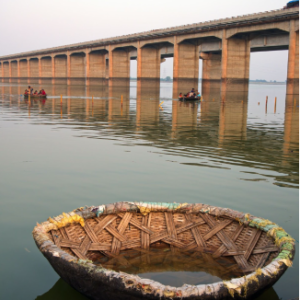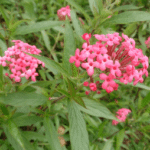Introduction:
River Krishna bears the name of Lord Krishna, a deity worshipped all over India. In India, rivers are seen as mothers or Gods who nurture and sustain life in this world. Rivers play a major role in the cultural and religious practices in India. Rivers are considered sacred and the traditional practice of bathing and drinking in the river is done even today to cleanse the body both physically as well as spiritually. It is believed by doing so one is liberated from the karmic cycle of reincarnation and is forgiven of their transgressions to help attain salvation or moksha.
A water boat on the Krishna river, Telangana
Source and origin
Krishna river otherwise called Krishnaveni is the 4th biggest river in India. It originates in Jor village situated in Satara district of Maharashtra north of Mahabaleshwar. It runs 1290 kilometres and covers an area of 258,948 km which is nearly 8% of the total geographical area of the country. The river basin is situated in the Deccan plateau covering the four states of Maharashtra, Karnataka, Andhra Pradesh and Telangana. Its largest basin lies in Karnataka. The river flows east to Wai and then Southeast past Sangli and drains into the Bay of Bengal near Hamsaladeevi in Andhra Pradesh.
This river has many tributaries. A few of them are
- River Ghatprabha
- River Malaprabha
- River Bhima
- River Tungabhadra
- River Musi
River Ghatprabha
This tributary emerges from the Western Ghats and joins River Krishna at Chikksangam, Karnataka. The river basin is 8829 square kilometres stretching across the states of Maharashtra and Karnataka. Gokak falls is located on this river in the Belgavi district of Karnataka. The river flows over a horse-shaped sandstone cliff from a height of 170 feet and flows as falls, creating a beautiful sight. Hence it is called “the Niagara of India”.
On the riverside of the Gokak waterfalls, the Mahalingeshwara temple is situated.
River Malaprabha
Malaprabha river originates in th Sahayadri mountains at Kanakumbi village , Khanapur taluk, Belgaum district.At its origin is situated an ancient temple of Shree Mauli Devi. This temple depicts the richness of Chalukyan architecture during the 7th and 8th centuries. The birthplace of this river is considered a pilgrimage centre with mythological origins. This river joins river Krishna at Kudalasangama in the Bagalkot district of Karnataka.
 A beautiful capture of the waterfalls
A beautiful capture of the waterfalls
River Bhima
The source of the river Bhima originates from the Bhimasankara hills and is the longest tributary of the River Krishna. It flows 861 kilometres through the states of Maharashtra, Karnataka and Telangana before joining the Krishna river. 24 km north of Raichur. It occupies 70% area of the Krisha basin in Maharashtra. The origin of this river is marked by the Bhimashankar temple which is considered to be one of the twelve Shiva temples in the country. It is an important pilgrimage centre in India.
River Tungabhadra
Tunga river’s source originates from a hill named Varaha Parvata in the Western Ghats at Gangamoola. The river joins the Bhadra river at a place called Koodli and is named Tungabhadra, the largest tributary of the Krishna river. It flows 531 km and its course is the majority in the state of Karnataka before entering the borders of Telangana and Andhra Pradesh. It meets the River Krishna near the Gundimalla village of Jogulamba Gadwal district in Telangana. This river is considered a religious river during the Vijayanagara empire.
The river flows through the districts of Chikmagalur and Shimoga.
A temple at Hampi of the 7th century
River Musi
This tributary joins the Krishna river in the Deccan plateau in the state of Telangana. The city of Hyderabad is situated on the banks of this Musi river also called the Moosa river or Musinaru or Muchukunda river. Its source starts from Anantagiri hills near Vikarabad and merges with the river Krishna at Vadapally near Mirayalguda in the Nalgonda district.
Koyna river another tributary of River Krishna originates in the Mahabaleshwar district of Maharashtra and is known as the lifeline of Maharashtra since this river aids the production of hydroelectricity in the state of Maharashtra. Koyna is famous for its hill station too.

A dam built across a river as a reservoir.
Conclusion
This Krishna river plays an essential role in the lives of the people who still worship them as Gods. They not only provide water for consumption and irrigation purposes, but they also generate hydroelectric power for the many states of India and promote tourism too.
Manikyadhara falls, Gokak falls, Ethipothala falls, Kalhati falls, Mallela falls and Theertham falls are popular among tourists. Apart from these tourist spots, there are Reserves for Wild Life Protection which promote tourism in the Southern states.
They act as drainage channels and provide a habitat for many living organisms. It is however important to keep them clean and pure to make our country more rich and fertile. Our children should be taught the value of every single drop of water they consume to conserve it for the generations to come. If rivers are dried up life on this earth will be devastated. Let us all join hands and welcome the project of river inter-link proposed by our Indian Government and conserve water.
22.06.2022




